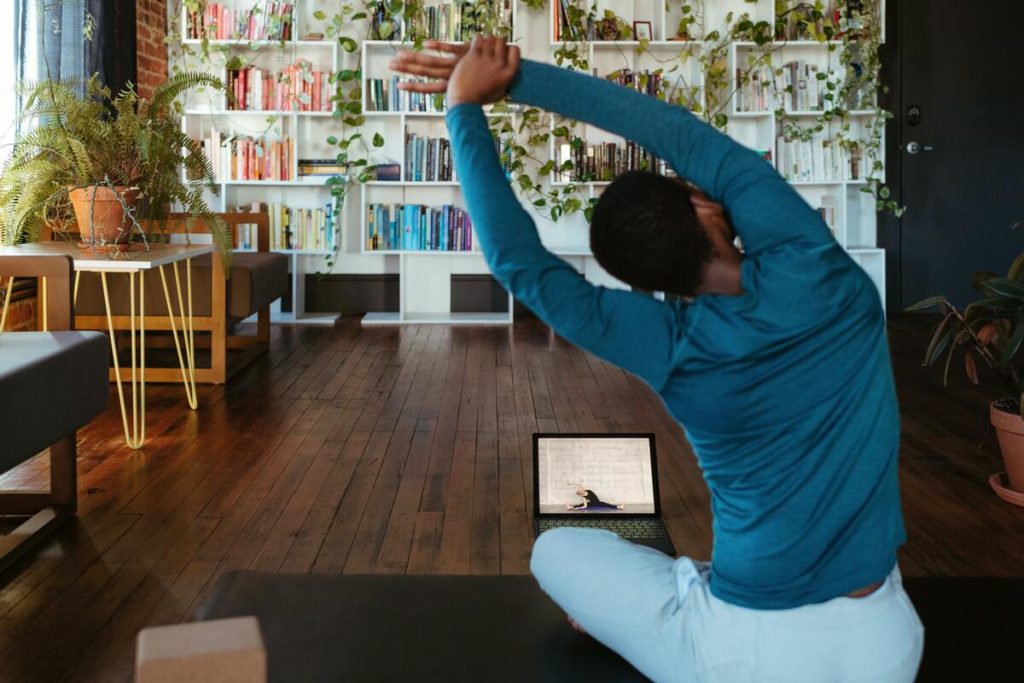A yoga room can be a great addition to any home, and it doesn’t have to be expensive or difficult to set up. You just need a few basic pieces of equipment and some space to devote to your practice. Here are a few tips for building a home yoga room.
1. Choose a space in your home that’s quiet and private
When choosing a space in your home to turn into a yoga room, you want a place that is quiet and out of the way of your regular tasks. A spare bedroom, guest room, or even a corner of a larger room can work. Even your bathroom, if it’s big enough, will make a great home for your yoga practice, but some people find they prefer to meditate in complete silence.
2. Make sure you have adequate ventilation and natural light
You want a room that’s bright and airy. A yoga room only needs to be as big as you need it to be, but if you’re planning on doing some dancing or more active forms of yoga, you don’t want the space too small. Ventilation is important for any type of yoga practice, as the room will get moist from your breath and sweat.
3. You don’t need any equipment besides a yoga mat
You can get by without any special equipment for yoga, but if you’re planning on doing some more advanced poses, it will be helpful to have a few basic props like blocks and straps to help you reach that position comfortably. Try to get a yoga mat that is long enough for your height, but not so big that it takes up too much space on the floor. Pick some accessories based on what you already have or are willing to spend.

4. Decorate the room with calming colors and images
You can add some accents to your yoga room to make it more calming and comfortable. Rustic Barnwood posts can make the room feel more organic. Add a few small rugs or create a focal point in the room with a large framed painting or poster. Try adding a candle for a relaxing glow when you begin your practice.
5. Make sure your space is safe for exercise
When doing any form of yoga, it’s a good idea to make sure you have a solid base under your feet. This means placing the yoga mat over a carpeted floor or creating another firm surface underneath with plywood and rubber mats or rugs. You can paint any unfinished wood floors to create a durable, comfortable surface for your practice.
6. Think about storage
If there’s ample storage in the room, you’ll be able to keep all of your equipment out of the way when not in use. Make sure you have enough space for your yoga mat, blocks, straps, and any other gear you plan on storing during your practice. If there’s no room in the room for storage, it may be worth considering building some shelves or cabinets in the closet or designing a locked cabinet to be installed with your baseboards.
7. Set up a comfortable seating area
If you plan on meditating in your yoga room, build or buy a meditation bench and place it directly opposite your yoga mat’s focal point. Add some cushions and pillows to make the most of this tranquil spot in your new home yoga space. A small love seat is another option for practicing your breathing exercises.
8. Consider soundproofing
You may also want to consider installing soundproofing in the room to keep noise levels at a minimum when you’re inside. You can install it yourself or hire somebody with experience in this area if you don’t think that you’ll be able to do it adequately.
9. Keep your yoga room clean and tidy
The last step is just making sure that you keep the space neat and organized by cleaning up after every practice session. You can use a yoga room for other purposes, but it’s important to keep this room relatively separate from the rest of your home so that you don’t mix up your practices. Keep the room smelling fresh with some natural air fresheners, wipe surfaces clean after every session, and you’ll be ready to stretch out in style!
In this article, you learned about how to build a home yoga room. Whether your space is expansive or limited, there are ways you can make the most of it for your practice and still have some storage options available. From decorating with calming colors and images to soundproofing in the event that noise levels become too high, these 9 tips will help any yogi set up their own personal space at home. If you’re tired of practicing on an old carpeted floor without ample light or ventilation, now’s the time to start building!



